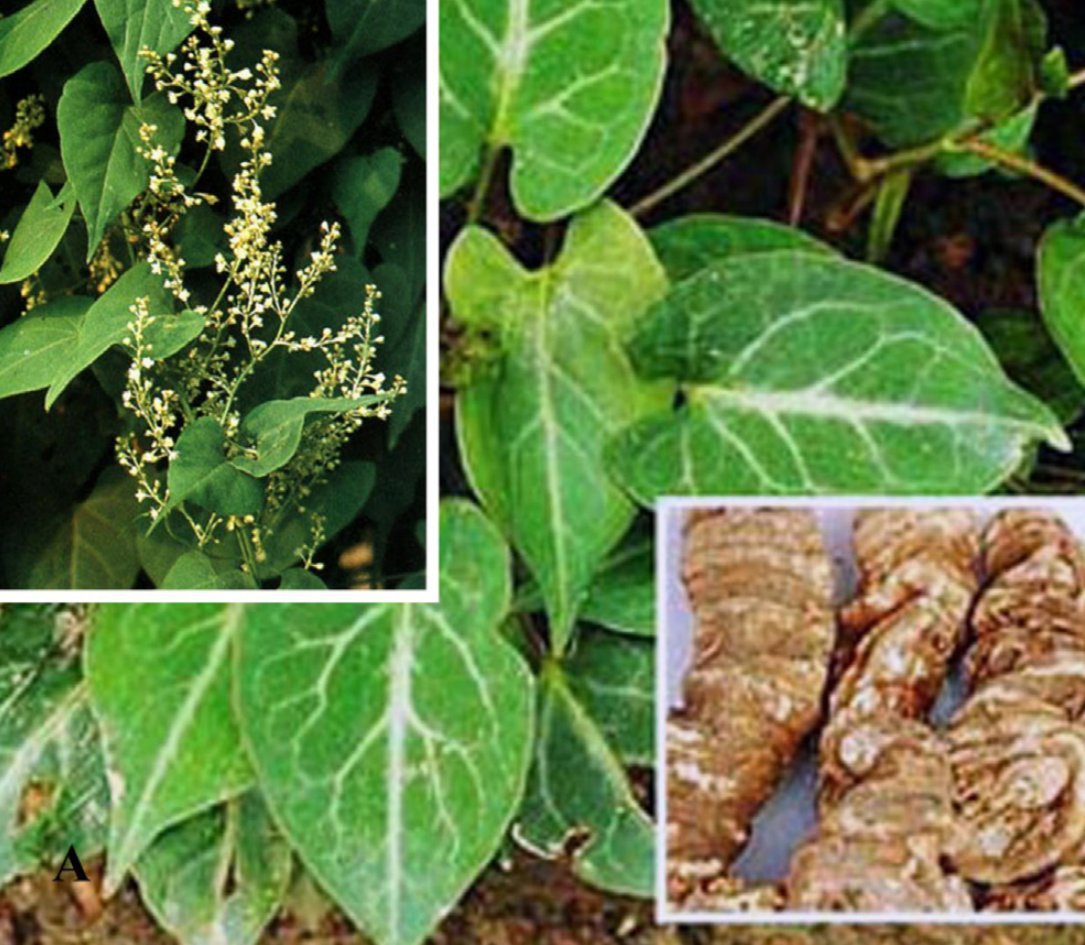 Polygonum multiflorum is a plant that is used in traditional Chinese medicine. The plant is widely grown and harvested in mountainous parts of China, where it grows as a shrub on hillsides, forests and rocky areas. It is also grown for its medicinal properties in Japan. Commonly the tuberous root is used as a medicine, but other parts of the plant may also provide some therapeutic effects. Traditional uses for the plant in a therapeutic capacity include its use as a treatment for inflammation, hyperlipidaemia and leptotrichia infection, as well as an antioxidant and anti-ageing compound. A number of phytochemicals have been identified from extracts of Polygonum multiflorum including a range of flavonoids, quinones and stilbenes. The high flavonoid and stilbene content of the plant likely explains its antioxidant capacity, and the flavonoids, quinones and stilbenes may all contribute significantly to its therapeutic medicinal effects. Phospholipids in the plant may also provide therapeutic value.
Polygonum multiflorum is a plant that is used in traditional Chinese medicine. The plant is widely grown and harvested in mountainous parts of China, where it grows as a shrub on hillsides, forests and rocky areas. It is also grown for its medicinal properties in Japan. Commonly the tuberous root is used as a medicine, but other parts of the plant may also provide some therapeutic effects. Traditional uses for the plant in a therapeutic capacity include its use as a treatment for inflammation, hyperlipidaemia and leptotrichia infection, as well as an antioxidant and anti-ageing compound. A number of phytochemicals have been identified from extracts of Polygonum multiflorum including a range of flavonoids, quinones and stilbenes. The high flavonoid and stilbene content of the plant likely explains its antioxidant capacity, and the flavonoids, quinones and stilbenes may all contribute significantly to its therapeutic medicinal effects. Phospholipids in the plant may also provide therapeutic value.

Resveratrol is a stilbene that is found in grapes and it may give red wine its medicinal properties. Resveratrol is present in Polygonum multiflorum along with other stilbenes including polydatin and rhaponticoside. The quinones present in Polygonum multiflorum represent the anthraquinones group including emodin, aloe-emodin, chrysophanol, physcion, rhein, 1,6-dimethyl ether-emodin, emodin-8-methyl ether, citreorosein, citreorosein-8-methyl ether, emodin3-methyl ether fallacinol, emodin-6,8-dimethylether and 2-acetylemodin. The flavonoids present in Polygonum multiflorum include tricin, rutin, luteolin, quercetin, kaempferol, isoorientin, apigenin, hyperoside, catechins, vitexin and quercetin-3-O-arabinoside. Phospholipids include phosphatidylethanolamine, copaene, eicosane, hexanoic acid, hexadecanoic acid methyl ester, hexadecanoic acid ethyl ester, octadecanoic acid methyl ester, octadecanoic acid ethyl ester, ethyl oleate, docosanoic acid methyl ester, tetradecanoic acid ethyl ester and squalene. Image from Lin et al (2015).
Eat Well, Stay Healthy, Protect Yourself
RdB
